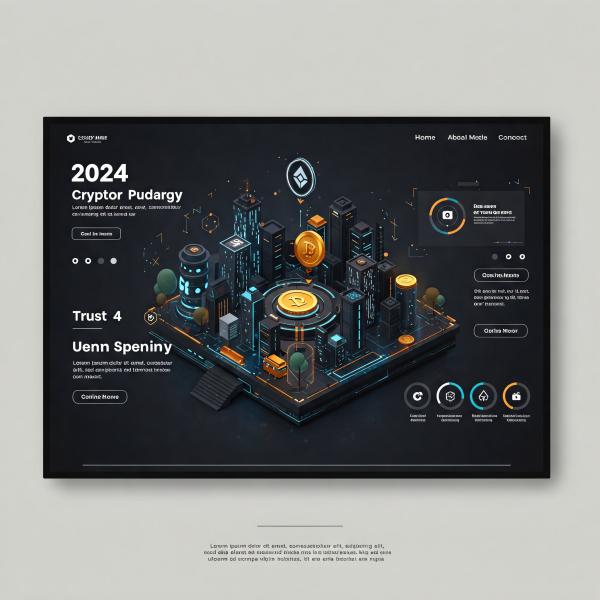Building Your Dream NFT Marketplace: No-Fluff Guide
Ever scrolled through OpenSea or Rarible late at night and thought, “I could totally build something even better”? You’re not alone. And spoiler alert: you actually can.
NFT marketplace development might feel like it’s reserved for hardcore tech bros, but honestly, if you roll up your sleeves (and fuel up on some espresso), it’s 100% doable. You just need a solid game plan — and maybe a heads-up on where people usually crash and burn.
Whether you’re a budding entrepreneur diving into Web3 or just feeling NFT-curious, this guide’s got you covered.
Let’s jump in.
What’s an NFT Marketplace, Anyway? (And Why You Should Care)
Imagine eBay, but instead of trading vintage sneakers, people are swapping digital art, rare music tracks, or even virtual land holdings.
At its heart, an NFT marketplace is where users can mint, list, buy, sell, and trade NFTs — with all transactions verifiable on the blockchain so no one’s getting scammed over pixelated apes.
A few platforms you might know:
- OpenSea: The Amazon of NFTs — huge and a little chaotic.
- Rarible: Community-driven, where users influence updates and features.
- Foundation: Think of it as a modern art gallery — curated and classy.
Each has its vibe, but all do the same thing: connect creators and collectors.
Why Bother Building Your Own NFT Marketplace?
Maybe you’re wondering, “Do we really need another one?” Quick answer: 100% yes.
Here’s why:
- ✅ Massive niche opportunities: Virtual pets, in-game skins, limited-edition albums — it’s wide open.
- ✅ You’re the boss: Set the fees, roll out custom features, and shape the whole experience.
- ✅ Multiple revenue streams: Transaction fees, promoted listings, premium memberships — pick your poison (or all of them).
Truth is, it’s still Day 1 for NFTs. Everyone thinks they missed the party, but the dance floor’s just getting packed.
Must-Have Features Most People Forget (Until It’s Too Late)
So you’re fired up. You’ve pictured the empire. Now, let’s talk about what your NFT marketplace must absolutely nail:
- 🎯 User-Friendly Storefront: Showcase items cleanly. Previews, ownership history, price changes — clarity wins.
- 🎯 Wallet Integration: One-click MetaMask or WalletConnect connectivity. No glitches allowed.
- 🎯 Smart Search & Filters: Help users find the hidden gems instantly.
- 🎯 Simple Listing Creation: Make minting feel like posting an Instagram pic.
- 🎯 Buying Options: Support auctions and instant “Buy Now” choices.
- 🎯 Blockchain Transparency: Show clear transaction history and ownership proofs.
- 🎯 Bulletproof Smart Contracts: Audit everything. Bad contracts = marketplace apocalypse.
- 🎯 Reviews and Ratings: Trust builds loyalty.
- 🎯 Admin Dashboard: Keep control simple for yourself and your support team.
Tech Stack Basics for NFT Marketplace Development
No need to black out staring at code — here’s the quick and dirty structure you need to know:
- ⚡ Blockchain: Ethereum (popular but pricey), Solana (fast + low fees), or Polygon (great hybrid).
- ⚡ Storage: Use IPFS for asset storage so your NFTs don’t get lost in cyberspace.
- ⚡ Backend: Node.js or Ruby on Rails — speedy and flexible choices.
- ⚡ Frontend: React, Angular, or Vue.js — all star players for sleek interfaces.
- ⚡ Wallet Integrations: MetaMask, WalletConnect — give people choices.
How to Actually Build Your NFT Marketplace
Here’s the step-by-step (no buzzwords, promise):
- Pick a niche: Focus wins over broad appeal every time.
- Choose your blockchain: Think about transaction fees and speed. Choose wisely.
- Design flawless UX/UI: Look pretty and work like magic.
- Develop rock-solid smart contracts: Automate selling, royalties, and permissions. Get them audited!
- Integrate wallets: Easy wallet login = faster adoption.
- Test everything: Break it yourself before your users do.
- Launch & promote like crazy: Build community on Discord, Twitter, TikTok — wherever your niche hangs out.
Classic Mistakes That Could Kill Your Marketplace
Heads up, rookie mistakes you’ll want to dodge:
- ⚠️ Scaling too late: Plan infrastructure for 10x your expected users.
- ⚠️ Complicated onboarding: Make 1-click wallet connection the norm.
- ⚠️ No community engagement: No memes? No vibes? No users.
- ⚠️ Weak security: One hack and it’s pretty much game over.
Real Inspiration: How NBA Top Shot Crushed It
NBA Top Shot didn’t just slap video clips onto NFTs — they made digital collecting stupid simple, targeted real fans (not just crypto nerds), and spoke right to their emotions. That’s the winning formula:
- Simple to interact with
- Beloved by a ready-made community
- Clear messaging without buzzword overload
FAQs About NFT Marketplace Development
- Q: How much does it cost to build an NFT marketplace?
A: Anywhere between $50K and $500K+, depending on whether you’re DIY-ing or hiring a senior dev squad. Don’t cheap out. - Q: Can you launch one without knowing how to code?
A: Yep — white-label solutions exist. But to scale successfully, you’ll eventually want your tech team in-house. - Q: What’s the hardest part no one tells you?
A: Building — and keeping — a loyal community. Tech wins wallets. Culture wins hearts.
Final Thoughts: Should You Build Your Own NFT Marketplace?
Short answer? If you’re serious about it — absolutely. But this isn’t a “build it and they will come” situation. Success only comes to those who build real value, obsess over experience, and nurture a ride-or-die community.
“The best way to predict the future is to build it.” – Peter Drucker
Keep it bold. Keep it scrappy. Keep it human. And when you finally launch? I’ll be the first one smashing that “Connect Wallet” button to check it out. 🚀

